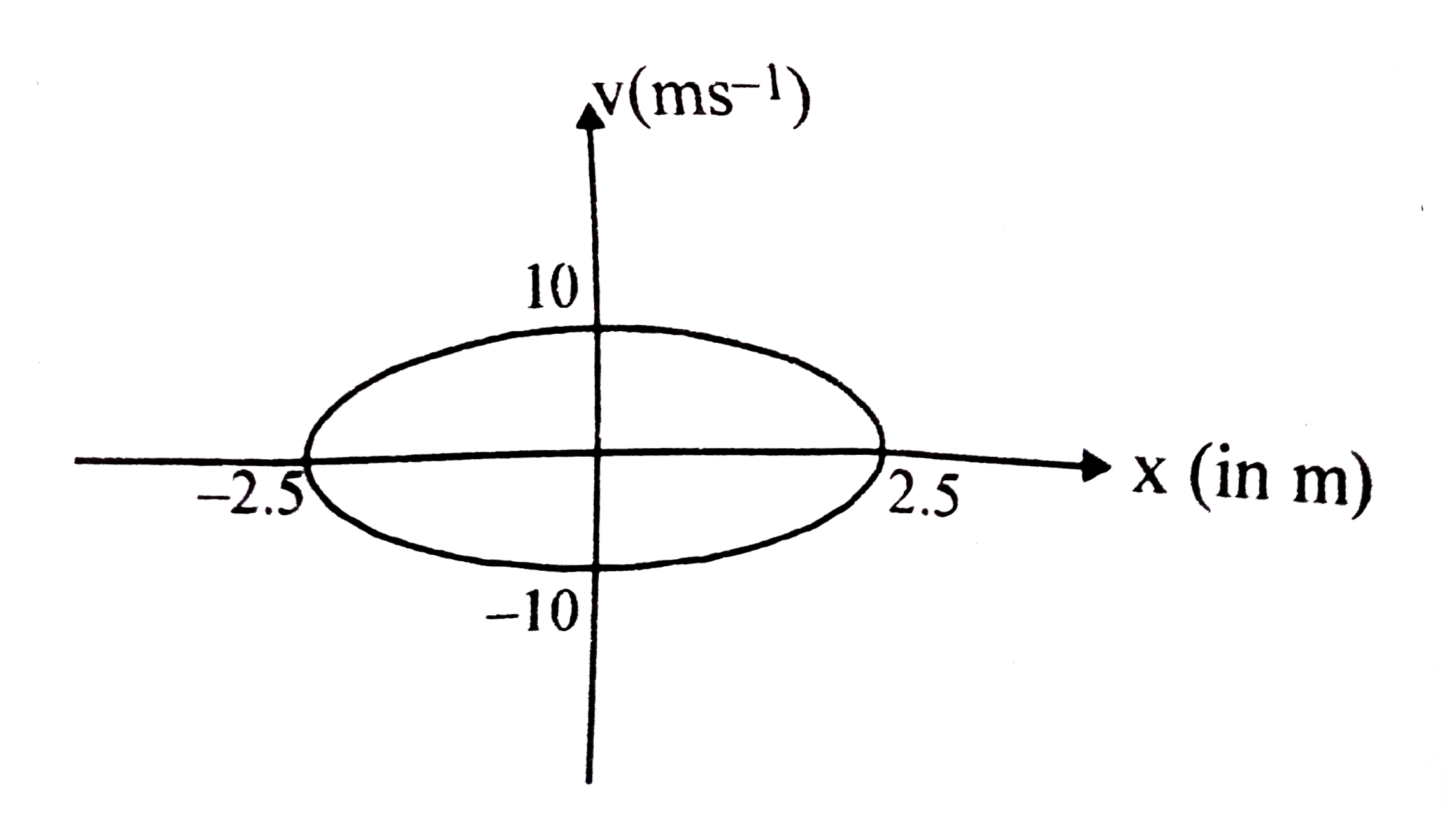Displacement between max. P.E. position and max. K.E. position for a particle excuting simple harmonic motion is : -
±a2
+a
±a
−1
The correct Answer is:C
To find the displacement between the maximum potential energy (P.E.) position and the maximum kinetic energy (K.E.) position for a particle executing simple harmonic motion (SHM), we can follow these steps:
1. Understand the Positions in SHM:
- In simple harmonic motion, the particle oscillates between two extreme positions, known as the amplitude (A) and -A. The midpoint of this motion is considered the equilibrium position.
2. Identify Maximum Kinetic Energy Position:
- The maximum kinetic energy occurs at the equilibrium position (midpoint) where the displacement (y) is 0. At this point, the particle is moving fastest.
3. Identify Maximum Potential Energy Position:
- The maximum potential energy occurs at the extreme positions, which are at +A and -A. At these points, the particle momentarily comes to rest before changing direction.
4. Calculate Displacement:
- The displacement between the maximum potential energy position (either +A or -A) and the maximum kinetic energy position (0) can be calculated as follows:
- From +A to 0: Displacement = 0 - A = -A
- From -A to 0: Displacement = 0 - (-A) = A
5. Conclusion:
- The displacement between the maximum potential energy position and the maximum kinetic energy position is A (from -A to 0) or -A (from +A to 0). Therefore, the absolute displacement is A.
Final Answer:
The displacement between the maximum potential energy position and the maximum kinetic energy position for a particle executing simple harmonic motion is A.
- In simple harmonic motion, the particle oscillates between two extreme positions, known as the amplitude (A) and -A. The midpoint of this motion is considered the equilibrium position.
- The maximum kinetic energy occurs at the equilibrium position (midpoint) where the displacement (y) is 0. At this point, the particle is moving fastest.
- The maximum potential energy occurs at the extreme positions, which are at +A and -A. At these points, the particle momentarily comes to rest before changing direction.
- The displacement between the maximum potential energy position (either +A or -A) and the maximum kinetic energy position (0) can be calculated as follows:
- From +A to 0: Displacement = 0 - A = -A
- From -A to 0: Displacement = 0 - (-A) = A
- The displacement between the maximum potential energy position and the maximum kinetic energy position is A (from -A to 0) or -A (from +A to 0). Therefore, the absolute displacement is A.
The displacement between the maximum potential energy position and the maximum kinetic energy position for a particle executing simple harmonic motion is A.
Topper's Solved these Questions
- NEETBOOK - NEET PREVIOUS YEAR (YEARWISE + CHAPTERWISE)CHAPTER - NEETEXERCISE - PHYSICS
157 Videos
- NEETBOOK - NEET PREVIOUS YEAR (YEARWISE + CHAPTERWISE)CHAPTER - NEETEXERCISE - QUESTION
95 Videos
- MOTION IN TWO AND THREE DIMENSIONBOOK - NEET PREVIOUS YEAR (YEARWISE + CHAPTERWISE)CHAPTER - MOTION IN TWO AND THREE DIMENSIONEXERCISE - All Questions
47 Videos
- NEET 2020BOOK - NEET PREVIOUS YEAR (YEARWISE + CHAPTERWISE)CHAPTER - NEET 2020EXERCISE - All Questions
45 Videos
Similar Questions
Knowledge Check
The shape of graph plotted between velocity and position of a particle executing simple harmonic motion is
AA straight lineBAn ellipseCA parabolaDA hyperbolaThe phase difference between the displacement and acceleration of a particle executing simple harmonic motion is
AzeroBπ/2CπD2πIn simple harmonic motion,the particle is
Aalways accelerationBalways retardedCalternately acceleration and retardedDneither acceleration nor retarded
The figure shows graph between velocity 'V' and displacement 'X' from mean position of a particle performing simple harmonic motion

The time period of motion of particle is:
View SolutionThe phase difference between displacement and acceleration of a particle in a simple harmonic motion is:
View SolutionThe figure shows graph between velocity 'V' and displacement 'X' from mean position of a particle performing simple harmonic motion

The velocity of particle when it is at a distance 1.5m from mean position is :
View SolutionWhich of the following relationships between the acceleration a and the displacement x of a particle executing simple harmonic motion?
View SolutionThe ralation between acceleration and displacement of four particles are given below
which one of the particles is executing simple harmonic motion?
View Solution
